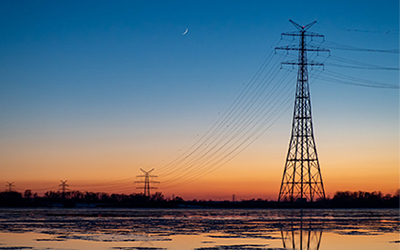
Integrated hydrological, power system and economic modelling of climate impacts on electricity demand and cost
M. Webster, K. Fisher-Vanden, V. Kumar, R. B. Lammers, and J. Perla
Nature Energy (6 January 2022)
Impacts of climate-related water stress and temperature changes can cascade through energy systems, although models have yet to capture this compounding of effects. Here, we employ a coupled water–power–economy model to capture these important interactions in a study of the exceedance of water temperature thresholds for power generation in the western United States. We find that not all reductions in reserve electricity-generation capacity result in impacts, and that when they occur, intermittent interruptions in electricity supply at critical times of the day, week and year account for much of the economic impacts. Finally, we find that impacts may be in different locations from the original water stress. We estimate that the consumption loss can be up to 0.3% annually and the drivers identified in coupled modelling can increase the average cost of electricity by up to 3%. Integrated models will be needed to capture the cascading effects of climate change through climatic, water, energy and economic systems. Webster et al. now develop a coupled hydrologic–power-production–economic model to estimate water-stress impacts on electricity cost.
additional materials:
summary slide | DOE highlight | open access manuscript